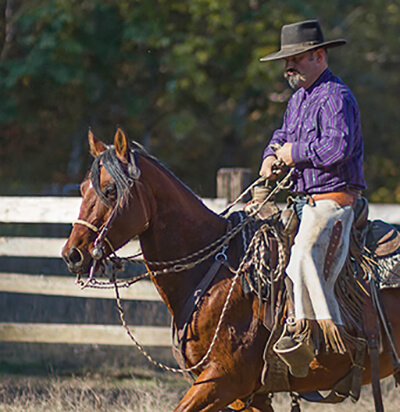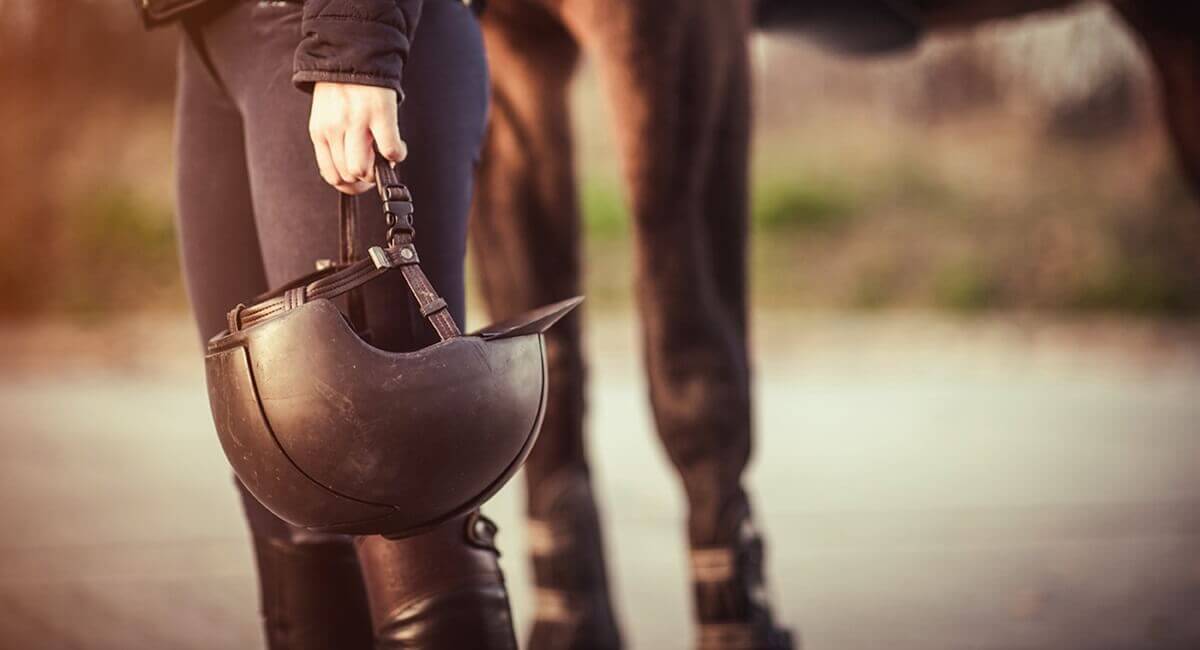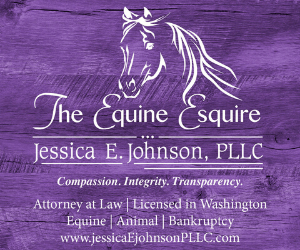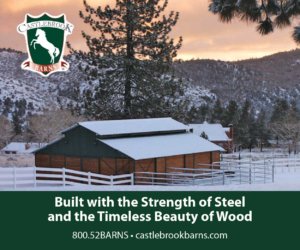Pay Attention to Four Crucial Areas
It was an ordinary late summer day—dry and warm, the perfect moment to be on horseback. We had been riding daily since mid June and had led almost 1000 kids, ages 8 to 10, out on trail rides. Most of them were first-time riders, and all of it was incident-free.
Many common horseback riding accidents can be avoided by doing a simple 4-part safety check before you ride. Completing a good safety check every time you ride only takes a few moments and will allow you to enjoy a lifetime of incident-free riding. Beginning while the horse is being tacked up, you should focus an educated eye on four crucial areas: yourself, the horse, the tack, and the environment.
1. Start With Yourself
Make sure you’re dressed for success for riding. That means long pants, good riding boots (with a smooth sole and heal), and clothing that is neither too tight or too loose, (no hanging items that could get caught on something or go around your neck) and of course protective headgear.
Also, check your attitude. Often this is one of the most important parts of the safety check. Be mentally ready, present, and an encourage yourself by using positive self-talk.
2. Check Your Horse
Your horse is your partner, and as the leader, you are expected to make sure he or she can perform. Check for any cuts, wounds, abrasions, swellings, or hot spots. Pay attention to your horse’s attitude, making sure that they are able and ready to be a willing partner. Do enough groundwork to establish a quality baseline relationship. Most of us ride because we love horses: a little extra time doing groundwork to make sure your horse is comfortable and willing will be well worth the effort.
3. Check Your Tack
Tack can often be something riders don’t fully understand. They do what they’ve always done, but a little education and attentiveness will really pay off.
Saddle pads or blankets need to be clean and free of debris. Hay and pine needles can cause irritation and sores. Ensure there are no folds or wrinkles, and your saddle pad should be pulled up into the gullet of the saddle.
Blanket and saddle pads should be straight and even with as much extra in front of your saddle as in the back. The saddle should be fit properly and match the horse’s back. The underside should be routinely checked for lump, bump, and nails protruding through the fleece. The saddle should be properly set in the saddle pockets on the horse’s back, just on and behind the withers. Make sure no straps or saddle strings are tucked under the saddle on the off side of the horse as well.
Carefully inspect all the components that hold your saddle securely to your horse. This includes the rigging, D rings, latigo, and the cinch or girth. They should be free of cracks and have appropriate but not excessive wear.
It’s also very important that you inspect all of the components that hold you in the saddle. This mostly means stirrups, stirrup leathers, and fenders. All these items should be free of cracks and tears and supple enough to move freely. It’s a good idea to get your saddle safety inspected and repaired yearly by a professional.
The bridle is also important, but often neglected. A bridle should not only be in good repair, adjusted properly, and fit to the horse comfortably, it should be appropriate for the level of knowledge and training of both horse and rider. If you’re using the headgear commonly used for the horse, a quick check of wear areas, Chicago screws, as well as proper adjustment will generally suffice.
4. Check Your Environment
This includes all your surroundings. If you’re in an arena, it may mean that you check that gates are shut and that obstacles and equipment you will not use are picked up. Do a once-over of the fencing and notice items such as coats, chipped boards, banners, mounting blocks, trot poles, flags, and all other spooky things that accumulate in a riding area that could be a problem for your horse.
The environment also includes the weather. Cold, hot, wet, windy, or icy—are you prepared? Maybe it’s not a big deal on a short trail ride but if you’re going to be out all day what will you need? What if you or someone you are riding with has an emergency?
A good safety check only takes a few moments to do and should be a habit every time you mount. Check both sides of your horse, look over the saddle, saddle pads, and the bridle. Check any gear you may have tied on your horse, check yourself. Tighten your cinch and reach up and tap your head to make sure you have your protective headgear on. It’s that simple and takes just a few moments.
Think safety. Do a safety check! Happy trails!
See this article in the January 2024 online edition:
February 2024

Scott DePaulo has worked in the horse industry since 1982. For more than 25 years he has managed Butte Creek Scout Ranch, a working ranch that specializes in Western trail rides and extended pack trips for the Boy Scouts of America and their families.
Scott has a deep belief in the positive effects of experiential learning and that horses can be used to build a positive character. He believes good horsemanship leads to good “humanmanship” (a word from Scott’s personal dictionary).
Scott is a certified clinician of CHA (Certified Horsemanship Association), a certified pack and trail clinic instructor, Western and English instructor, EFM instructor, CHA site certifier, and is a Certified Equine Specialist with the Equine Assisted Growth and Learning Association. Since the early 2000s, he has worked on an equine assisted psychotherapy team using horses to help heal troubled youth and recovering adults. Learn more at ScottDepaoloHorsemanship.com.





